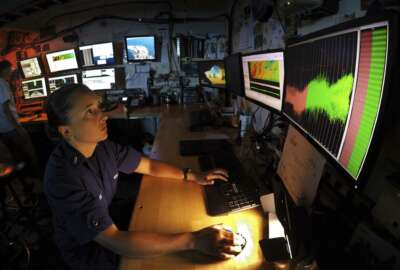
NOAA Fisheries sail toward democratizing software development
“Our organization has about 4,000 people scattered in about 50 locations. And thanks to COVID, it’s become 4,000 locations,” said Roy Varghese, the chief...
Within the Commerce Department, the National Marine Fisheries Service is an office at the National Oceanic and Atmospheric Administration — simply called, NOAA Fisheries.
“Our organization has about 4,000 people scattered in about 50 locations. And thanks to COVID, it’s become 4,000 locations,” said Roy Varghese, the chief information officer at NOAA Fisheries on Federal Monthly Insights — Federal Digital Transformation in a Post-COVID World.
Varghese has been CIO for almost three years, but starting nearly a decade ago as the Project Management Office Manager, he pursued policies to speed up IT modernization, in a world where marine species sustainably exist.
“From an IT perspective, our job is to enable the scientists to do the leading science that supports our regulatory management work. So if you think about it, our science informs the decision on how much seafood to harvest at a particular time. And that requires collecting information, sharing that information with our partners, and making decisions based on that.” Varghese said on Federal Drive with Tom Temin.
NOAA Fisheries isn’t just counting the creatures in the sea. Its scientists are constantly gathering data from all over the world, in a collaborative manner.
“Our ecosystem-based management approach requires us to collect and gather data not just from our scientists, but also from our state and local partners, international partners, academia and NGOs. They come together to make recommendations and a decision is made as to when and how much our fisheries are harvested,” Varghese said.
NOAA manages hundreds of fisheries, at which data is collected that is specific to each fishery, about such things as population health and abundance, as well as overall ecosystem health.
“Those systems, from an IT perspective, in some cases are small, but very important. It’s been custom built, home grown over the last 30 or 40 years. Some are built on legacy platforms that have worked very well. Some are getting rebuilt. So we have a wide range of applications in our portfolio. At last count, I think we had about 800 or so applications in our environment of various sizes and shapes and scope,” Varghese said.
So the digital modernization and application development process moves forward at NOAA, like a robust fishing boat on smooth seas. Varghese characterizes it as “an application rationalization process to help inform how we want to do this digital transformation journey.”
“That requires us to look at our inventory, as well as the mission we’re trying to accomplish. We’re going to do it all ourselves, unless we can wave a magic wand. But the last time I looked for a magic wand, I couldn’t find one. So we have to look at a very rational way to move forward, and that requires us to categorize our application portfolio in a way that we can develop a multi-pronged strategy to transition,” Varghese said.
Varghese also envisions empowering the staff in the field by getting them rapidly certified in order to work on “complex applications.”
“We want to democratize the software development process in a way that the power is in the hands, the ability is in the hands of the folks in the field.”
Copyright © 2025 Federal News Network. All rights reserved. This website is not intended for users located within the European Economic Area.
Peter Musurlian is a producer at Federal News Network.
Follow @PMusurlianWFED





